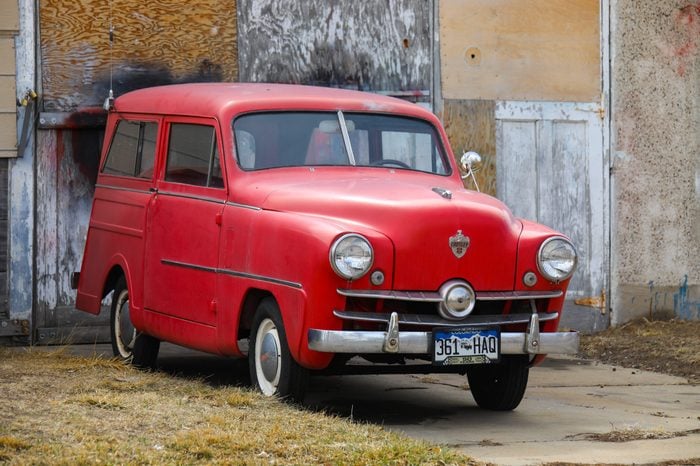
1950: Crosley Station Wagon
With the U.S. auto industry blooming, the upwardly mobile culture of America was in full swing by the time the 1950s arrived. Crosley, a small firm from Cincinnati, but so much more than a forgotten footnote in U.S. automotive history, introduced several firsts such as the popular term sport utility way back in 1947. Signs of the future of American cars are still visible today in the 1950 Crosley Station Wagon; squint and you can maybe see an early Subaru Forester in there.
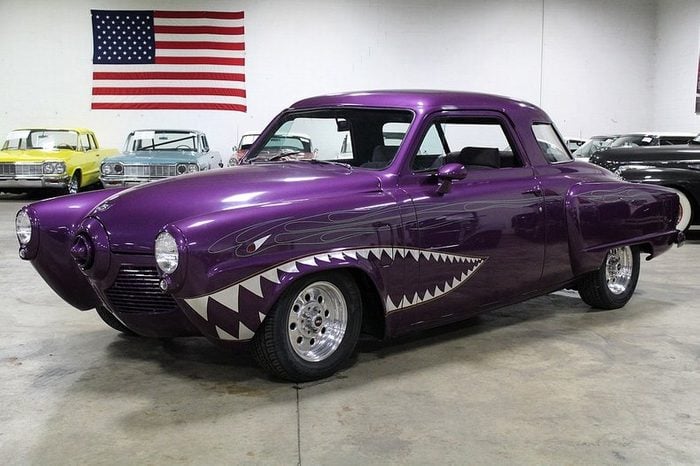
1951: Studebaker Starlight Coupe
Despite not surviving long enough to see out the decade, Studebaker, in name alone, screams “1950s!” loud and clear. The 1951 Starlight Coupe featured an innovative wraparound greenhouse rear window that, nearly 60 years on, looks sharp, futuristic, and just plain cool. No one would ever call the Starlight a weird vehicle, then or now, but the same cannot be said of these truly wacky cars.
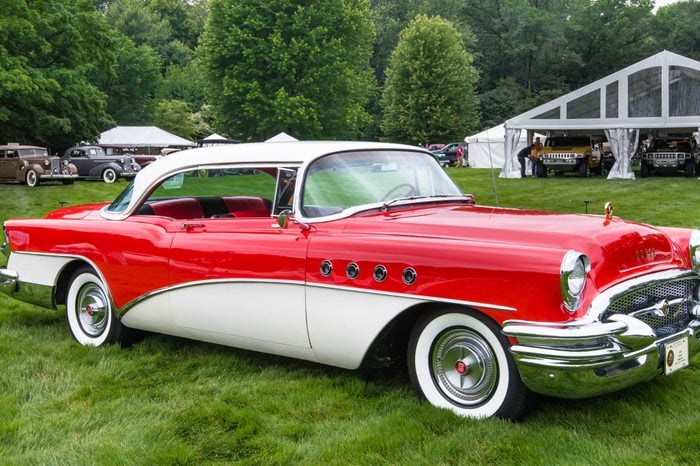
1952: Buick Roadmaster
The Korean War effort and a steelworker strike conspired to stunt the American auto industry but 1952 saw many iconic vehicles being produced and devoured by a public eager for shiny new wheels. The Buick Roadmaster was a popular car model that, looking back on it now, seems perfectly indicative of the glitz and Hollywood glamour of the early 1950s. For more of this decade’s glitz, check out these 25 photos that capture the classic allure of the 1950s.
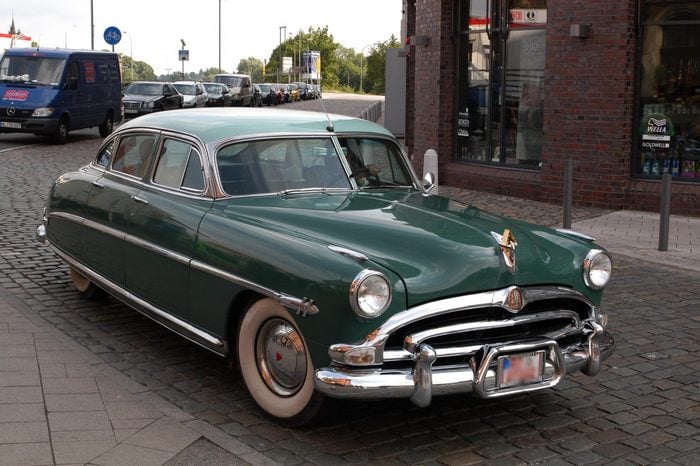
1953: Hudson Hornet
Hudson was the first automobile manufacturer to get involved in stock car racing with Hornets taking home 22 checkered flags in the 37 NASCAR races in 1953. Sadly, the Hudson brand and the Hornet model would not last the decade but in the early 1950s this long, surprisingly modern car was quite the looker!
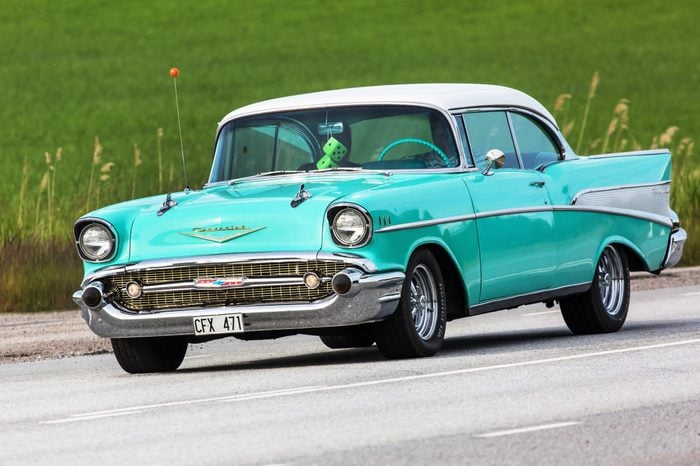
1954 to 1955: Chevrolet Bel-Air
Come 1954, cars in the United States were more affordable and being made safer and easier to drive. Power steering and automatic transmission were in more than 50 percent of new models. GM also introduced a new invention called the “Autotronic-Eye” which would automatically dim the high beams when a car would approach and then turn them back up when the oncoming car passed (something not even standard in all new cars today!). By 1954 and 1955, one of the most iconic rides of this era was now being offered with power brakes, power 2-way front seat, and power front windows. It was also available in stunning seafoam green. Interior carpet, a Ferrari-inspired grille, V8 engine, and 2-speed automatic transmission also helped to make Chevy’s “Hot One” a popular car in the mid-1950s.
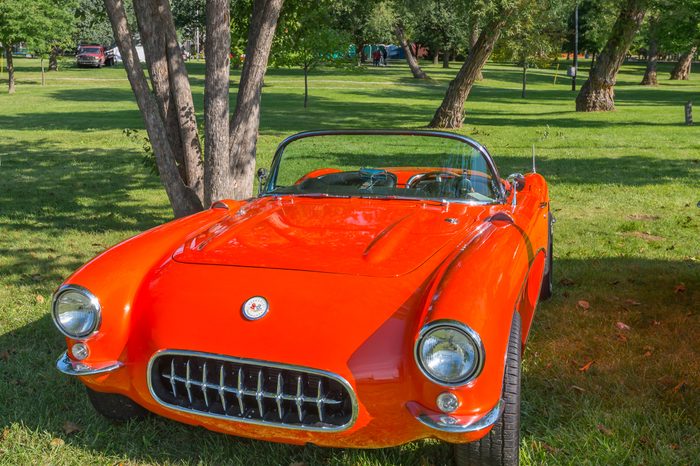
1956: Chevy Corvette
First unveiled at the 1953 New York Auto Show, the Chevy Corvette grew up quick in the early 1950s. By 1956 a hydraulically operated power convertible top, power windows, and a Delco ‘hybrid’ radio with both vacuum tubes and transistors in its circuitry were available options. The rest, as they say, is history for one of the most iconic cars in American history. While classic, the Corvette, however, is not the best-selling car of all time; find out which car wears that crown.
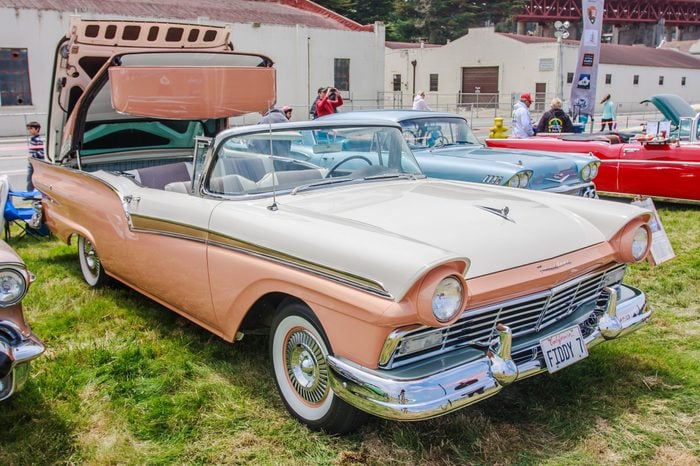
1957: Ford Skyline
Originally produced with glass covering 3/4 of the roof when it arrived in 1954, Ford quickly converted its stunning Skyliner into something more practical and jaw-dropping for its 1957 model. Its dominant and most striking feature was a hi-tech, hardtop convertible roof that, as Motor Biscuit describes, “gracefully opened and arced back into a rear-hinged trunk in a matter of seconds. To accomplish this balletic feat took no less than six motors, four lift jacks, a host of electrical relays, ten solenoids, four power lock mechanisms, and over 600 feet of wiring.”
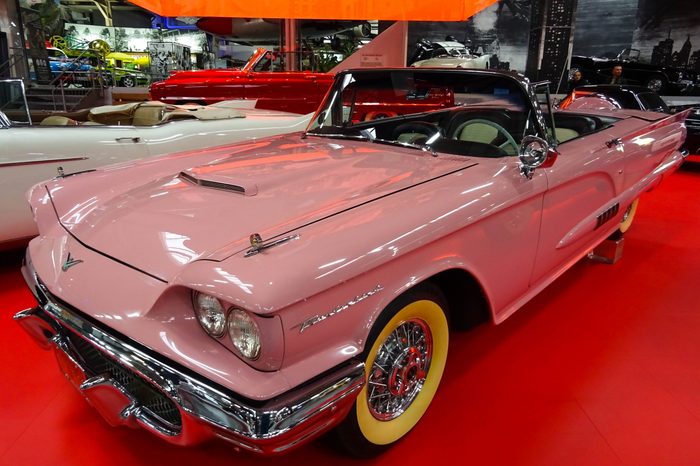
1958: Ford Thunderbird
The legendary V8 ride was born the year prior but in 1958, Ford’s striking new sports car would outsell Chevy’s Corvette. This model of Thunderbird was the first Ford vehicle designed with a unibody construction and it took home Motor Trend’s prestigious Car of the Year award in 1958, the first-ever debut car to do so.
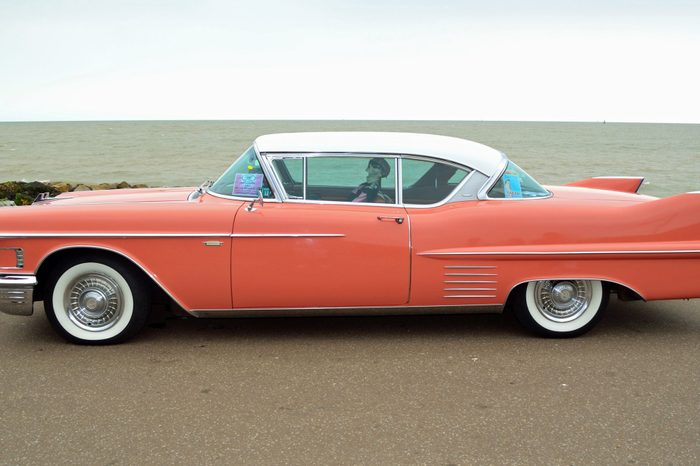
1959: Cadillac Coupe de Ville
One of the most iconic car designs in American history, the Cadillac Coupe de Ville debuted in 1959 with a 325 horsepower V8 engine and those big, beautiful tail fins with brake light missiles protruding from the distinctive rear of the vehicle.
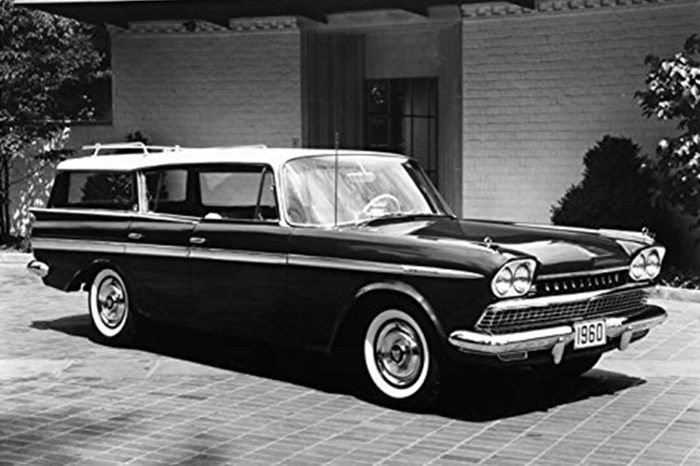
1960: Rambler Ambassador
During the 1958 recession, American Motors Corporation was the only domestic car manufacturer to show a profit and its Ramblers proved quite popular. In 1960, over 450,000 Ramblers rolled off the line and became number three in sales among domestic brands. Ramblers were the first cars to use Unibody construction throughout their model lineup and were the first to provide seat belts standard (at the end of the 1950s). Find out the safest seat in your car—provided you’re wearing that seatbelt.
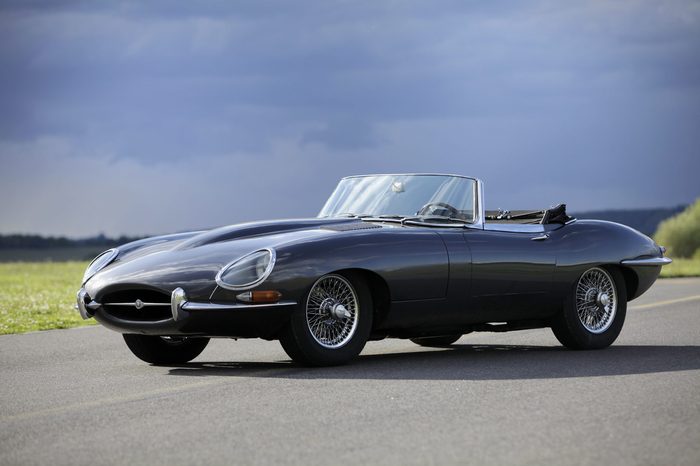
1961: Jaguar E-Type
More of a style icon than a practical consumer car, this Jaguar would foreshadow the culture change afoot in America in the early 1960s. The E-Type remains a sexy, sporty car that wouldn’t look out of place in South Beach or Hollywood Hills today.
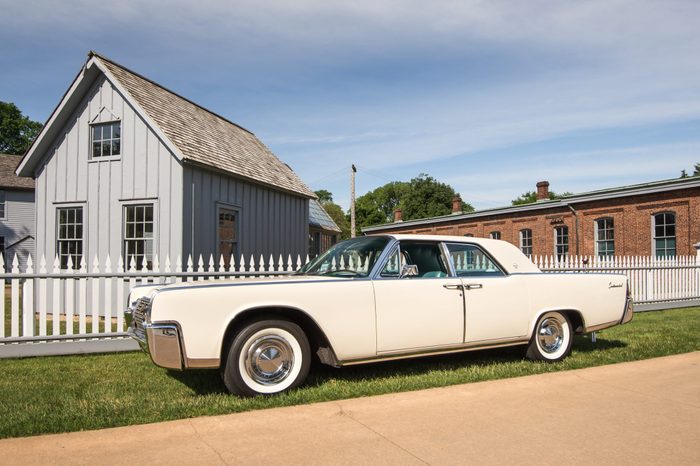
1962: Lincoln Continental
A giant on the road and in U.S. history, the Lincoln Continental was a cushy ride and sold well despite a hefty price for the time. Sadly, most will see the Lincoln Continentals and see the nation’s darkest moments flash before their eyes as this is the vehicle carrying President Kennedy when he was assassinated the following year.
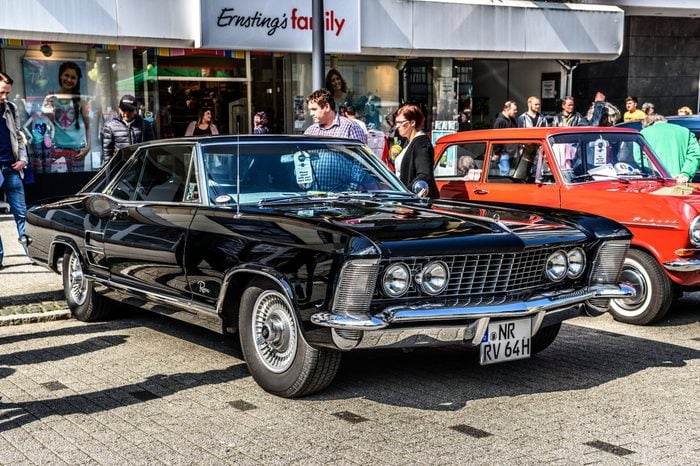
1963: Buick Riviera
Elegant design featuring real wood and bucket seats blended with a 325 horsepower V8 engine to produce one of the early 1960s more revered rides.
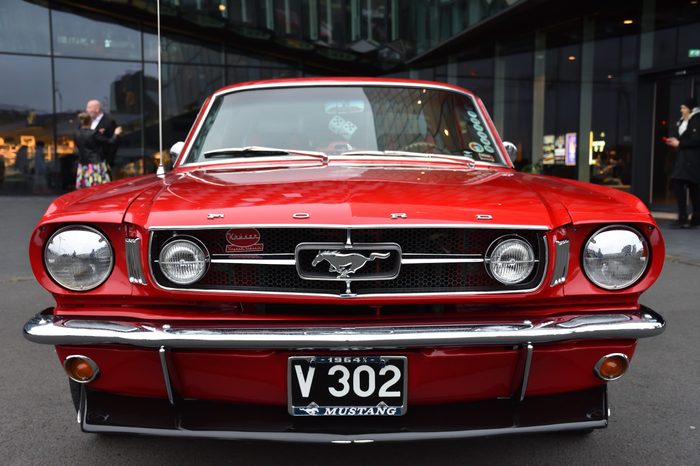
1964: Ford Mustang
Zero to 60 Times says it best when it comes to the Mustang: “Probably the single most iconic ’60s car in America, the 1964 Mustang started a revolution. Good looking and cheap, the original Mustang wasn’t fast, but offered a V8 option that showed the capability of the design.”
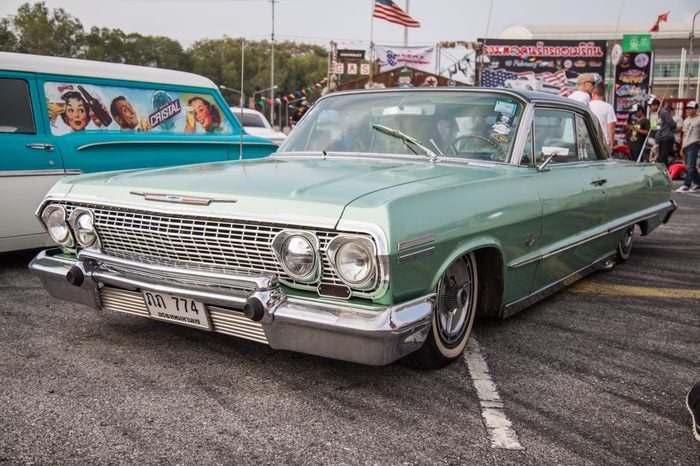
1965: Chevrolet Impala
The dominant vehicle in America in both 1965 and 1966, the Impala broke the million unit mark in both years making it the single model highest annual sales leader of all time in the United States.
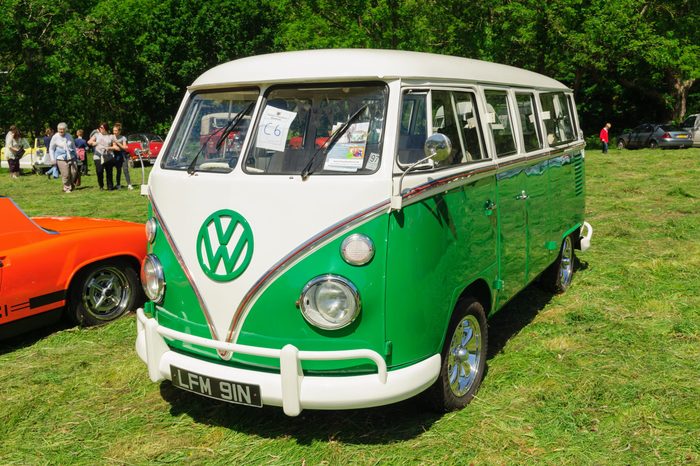
1966: Volkswagen Type 2 Camper Bus
Aside from the muscle cars of the 1950s and early 1960s, no vehicle is as synonymous with an era than the VW microbus. The Volkswagen Type 2 Camper Bus would have been the primo choice of the tie-dyed counterculture generation come the second half of the 1960s.
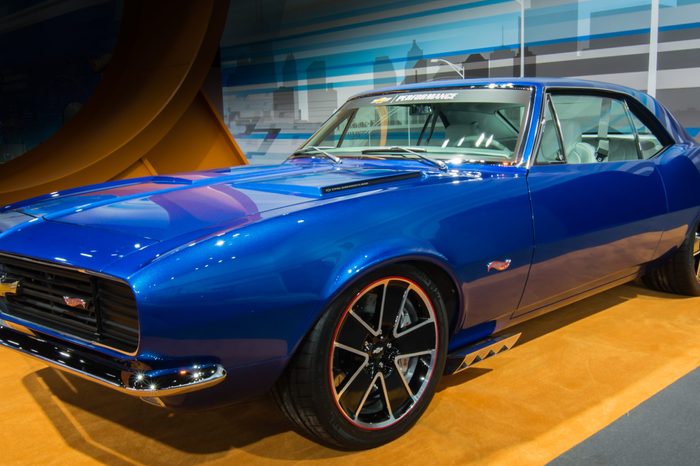
1967: Chevy Camaro
According to MSN, Chevy launched the Camaro with a secret menu, not unlike In-N-Out Burger. The Z28 package, most notably, was “strictly for those in the know as it wasn’t mentioned in any of the sales brochures.” With it came a “4.9-liter engine, front disc brakes, power steering, and four-speed manual transmission…the Z28 motor had been developed for racing and offered up to 400bhp.” The best thing of all about the announcement of a new rival sports car was this quote from a Chevrolet sales executives claiming a “Camaro” was, “a small, vicious animal that eats Mustangs.”
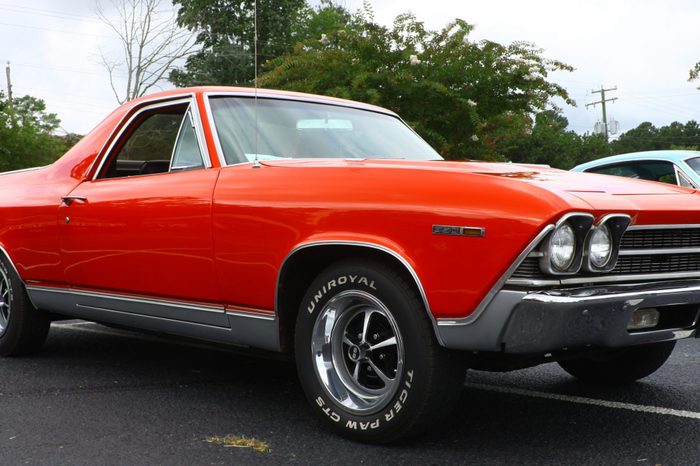
1968: Chevy El Camino
This year marked the introduction of the third generation El Camino, a longer model than ever before, with all-vinyl bench or cloth bucket seats as options. In 1968, an automatic transmission was also available for this car that would, for many, come to define the gritty and groovy look of the early 1970s.
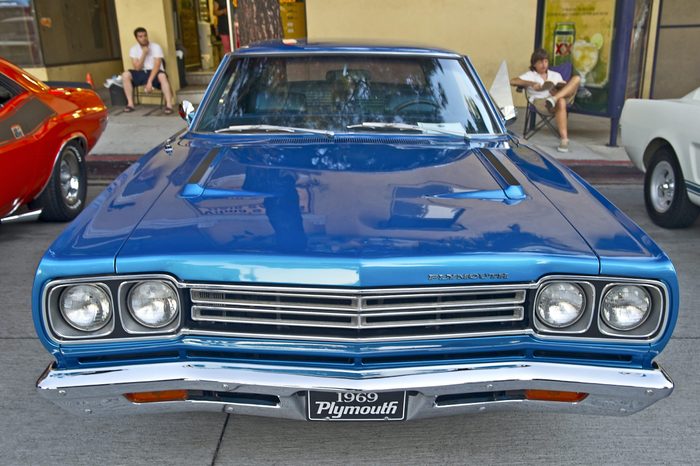
1969: Plymouth Roadrunner
As the popular muscle cars of the 1960s piled on new features and increased in price, Plymouth sought to retain the affordable, “every man'” market with their Roadrunner. This model was designed as a low price, basic option for those wanting to muscle their way into the next decade.
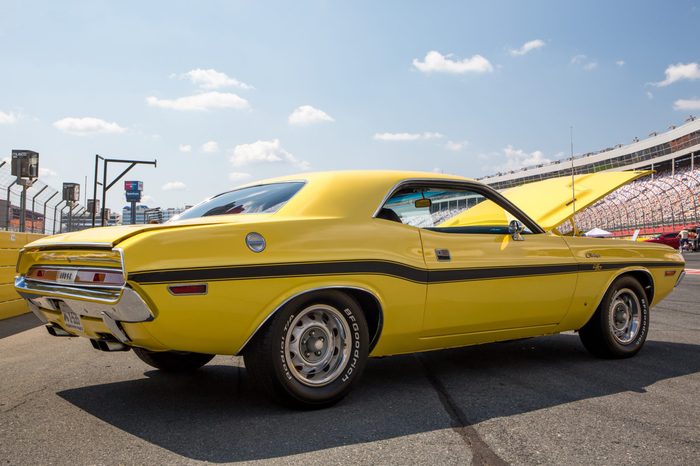
1970: Dodge Challenger
Another car made popular again by The Fast and the Furious movie franchise, the Dodge Challenger made its sexy, muscular debut in 1970 and was first on-screen at the General Lee in The Dukes of Hazzard TV series. Arguably, no car from the 1970s has remained as beloved or as badass.
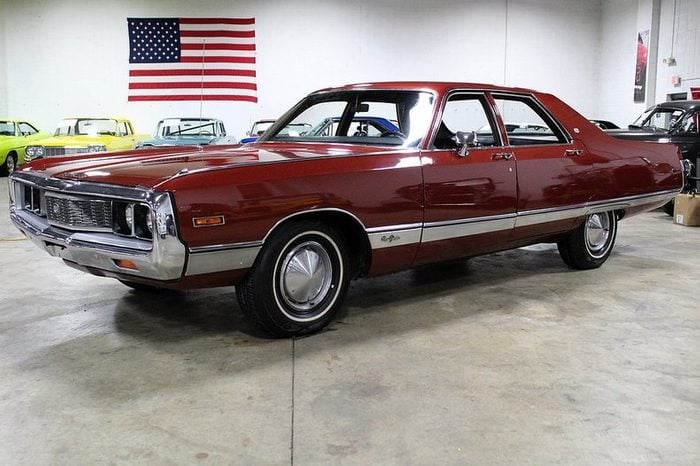
1971: Chrysler New Yorker
Long, slender, and handsome, Chrysler’s New Yorker is the perfect vintage car to cast if you have plans to make a movie set in the gritty inner cities of the 1970s. New for 1971 were ventless front-door windows on the four-door sedan and a hardtop roof.
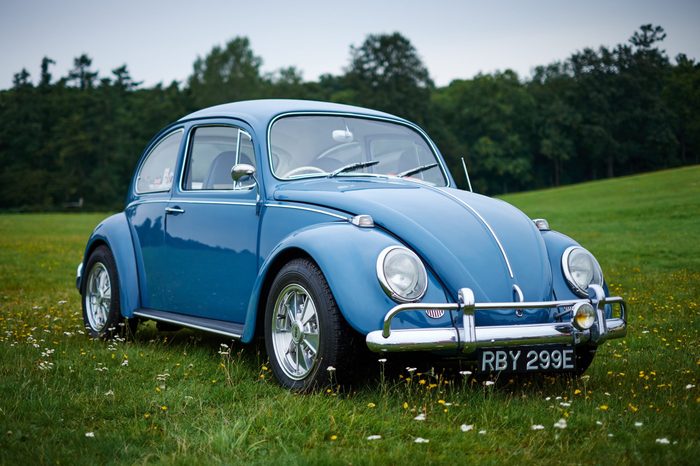
1972: VW Beetle
Sadly gone today, the Beetle was unlike any other vehicle for much of its 65 years. No car aside from the Model T is more instantly recognizable. It was with the 1972 model that the VW Beetle overtook Ford’s famous Model T as the world’s all-time most-produced automobile.
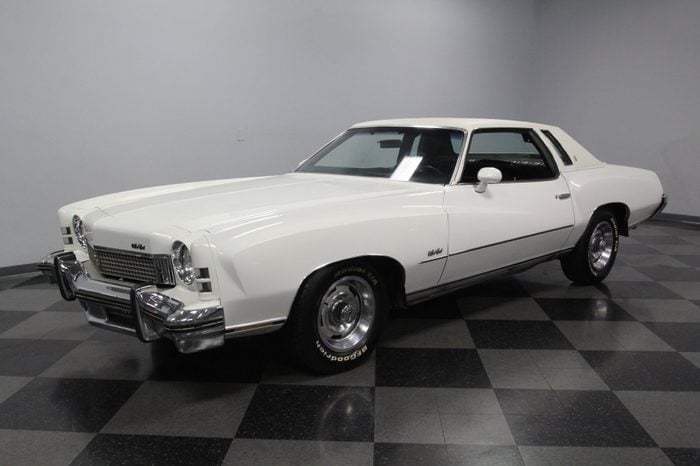
1973: Chevrolet Monte Carlo
The 1973 Monte Carlo was crowned Motor Trend’s “Car of the Year,” thanks in large part to its “Euro-style ride and handling, and a number of large American car innovations like standard radial-ply tires, Pliacell shock absorbers, and high-caster steering.” With nearly a quarter-million Monte Carlos sold in 1973, the model set a new sales record for Chevrolet.
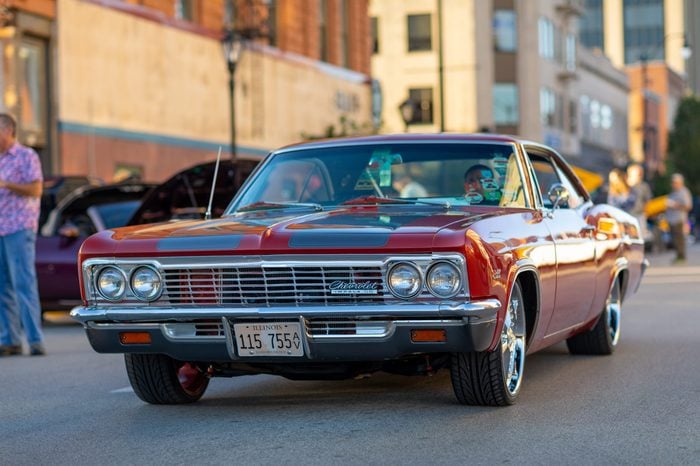
1974: Chevrolet Impala
The roomiest domestic car on the market and reliably high resale values helped to make the Impala the class of the mid-1970s auto scene in America. The 1974 model featured new front disc brake wear sensors and improved number system and carpeting.
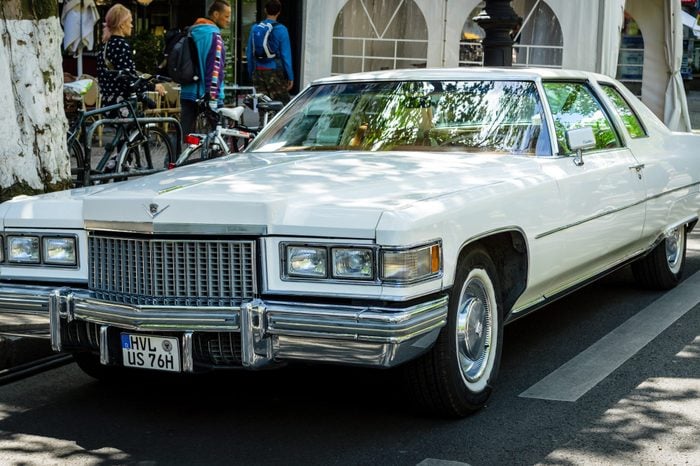
1975: Cadillac Coupe de Ville
No vehicle screams the 1970s more than the mid-decade Caddy de Ville. This plush ride became a living room on wheels, a long, deluxe V8 powered sofa. The only thing missing was the shag carpet and a mirror ball, although an Astroroof with sliding sunshade was an option.
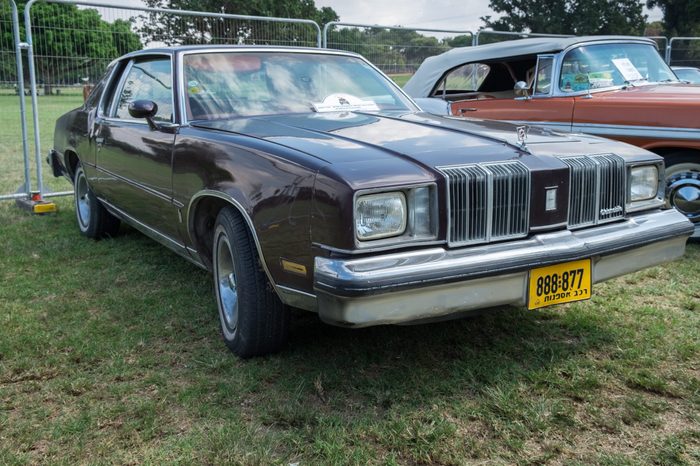
1976 to 1981 and 1983: Oldsmobile Cutlass
With sales growing from 300,000 to more than 500,000+, the car model that doesn’t exist from the brand that also vanished was the most popular car in America in the mid-late 1970s. The Cutlass, both in name and style, is retro in an outdated way but the best-looking features—the slim window and the alternate color cap over the backseat on the 1975 Supreme coupe and the rounded triangle backseat window on the standard editions—still hold up…barely. In 1983 the Cutlass Supreme outsells every other U.S. vehicle. It’s the last time any Oldsmobile will accomplish this feat.
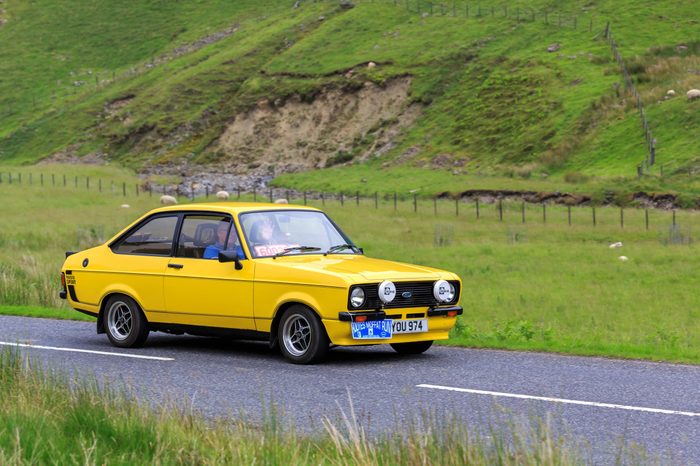
1982: Ford Escort
The best selling passenger car during the American recession was the Ford model with the slightly scandalous name that replaced a car with a famous hump, the Pinto. If that’s not serendipity, we don’t know what it. Over 337,000 Americans took an Escort home in 1982.
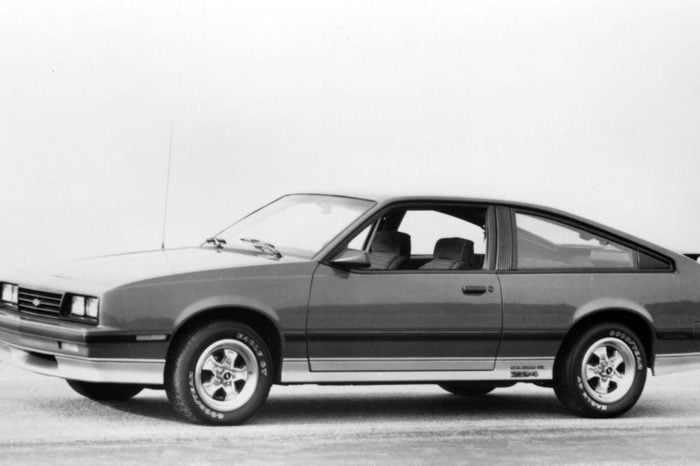
1984 to 1985: Chevrolet Cavalier
Over these two years, Chevy moved over 800,000 Cavaliers thanks in large part to the genius idea of offering five different body types, a coupe, sedan, hatchback, wagon, and a convertible version of the most popular car in America in the mid-1980s.
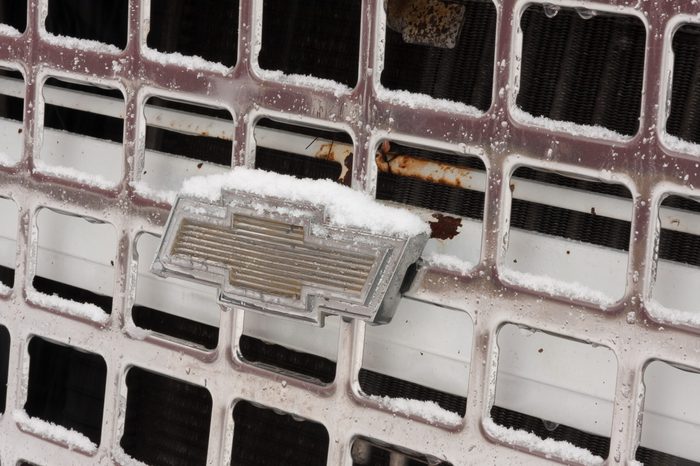
1986: Chevrolet Celebrity
The Celebrity is the big brother to the Cavalier and used its heft to bump Chevrolet’s popular smaller sedan from the top of the U.S. sales pile in 1986. Very boxy and utilitarian in design, and very mid-1980s in its dated style, the Celebrity would disappear from new car dealers’ lots only four years later.
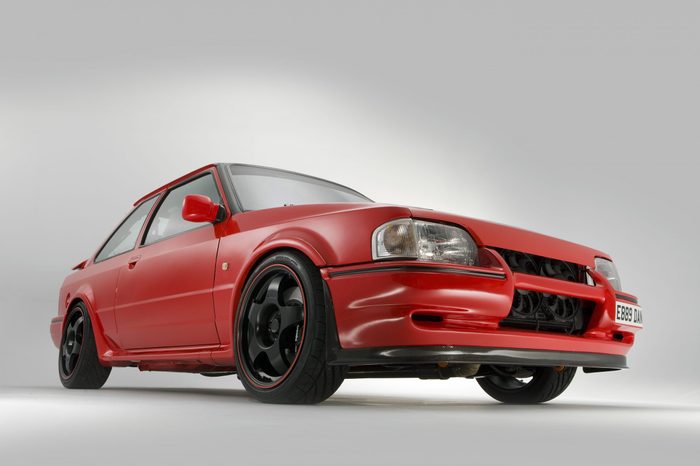
1987: Ford Escort
The Escort makes a two-year return to the top position of the U.S. automobile sales table after a half-decade away. By 1987, Ford’s best-selling small sedan has fully shed its 1970s veneer in favor of that rectangular 1980’s design template that ages about as well as the fanny packs many Escort drivers and passengers were surely sporting in the late 1980s.
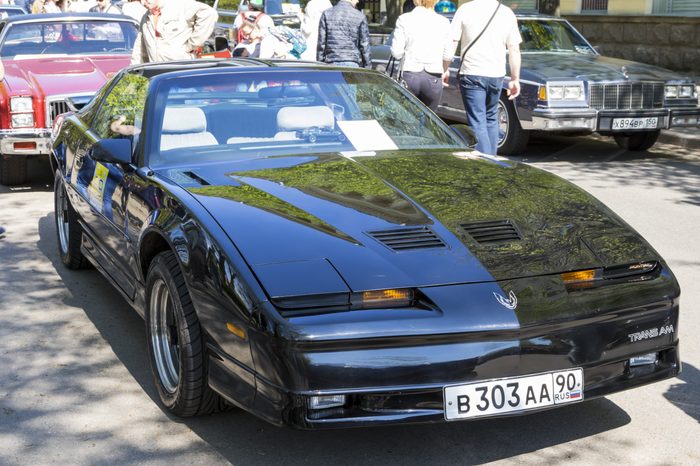
1988: Pontiac Firebird
From a star turn in Smokey and the Bandit to the Hoff’s famous talking car KITT, the Pontiac Firebird was a staple both on screens and streets across America. In 1988 Pontiac offered their Firebird with the option of removable roof “T-Tops” as well as a fiberglass rear deck lid called a “Notchback” costing $800 and making the car look more like a Ferrari. The Firebird doesn’t make this list today, but here are the 10 cars most likely to get stolen.
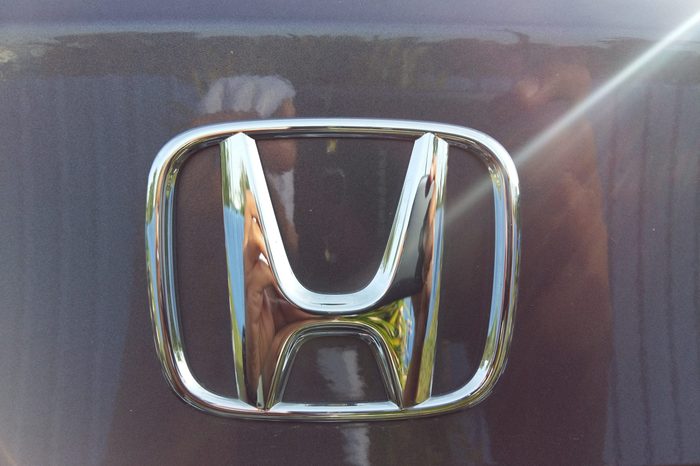
1989: Honda Accord
The first time an import bumped off the domestic small car leaders Chevy (Cavalier) and Ford (Escort) came in 1989 with the 3rd generation of the Accord. It was offered in three body types (sedan, hatchback, and coupe) and landed on the prestigious Car & Driver 10Best list, something those other domestic best-sellers never managed. Honda’s flagship vehicle would spend the following two years as the top-selling car in America, moving nearly 1.2 million Accords in that three-year span.
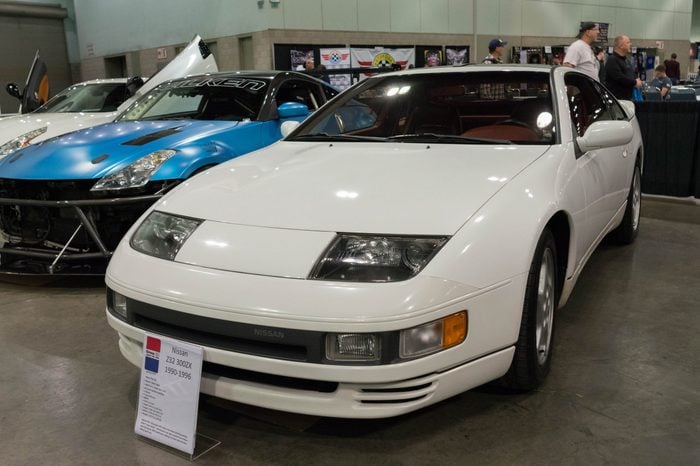
1990: Nissan 300ZX
A fixture on Car and Driver‘s10Best list for each of its seven years in the United States, and Motor Trend’s Import of the Year in 1990, this second generation 300ZX was one of the first cars to have computer-controlled features. Fun fact: In Japan the Nissan 300ZX was sold under the less evocative name Fairlady Z.
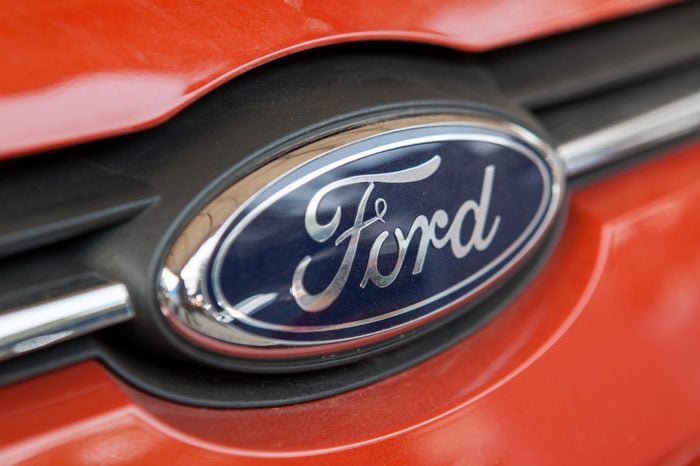
1991: Ford Taurus
The second-generation Taurus, released in 1991, would usher in an unprecedented reign for Ford as the best-selling car in America for a whopping six straight years before forever ceding that mantle to Toyota.
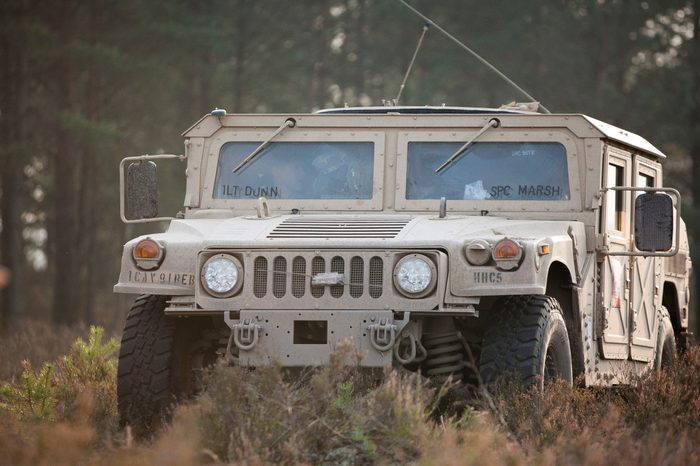
1992: Hummer H1
Within a decade of this military-grade machine hitting the scene, it was already unconscionable that these consumer tanks were spotted all over America, from highways fast lanes to grocery store parking lots. Now, nearly 30 years later, it seems even more ridiculous that anyone would want a gas-guzzling mobile fortress that needed 20 seconds to go 0 to 60 mph. Thankfully, the consumer Humvee craze came and went quickly.
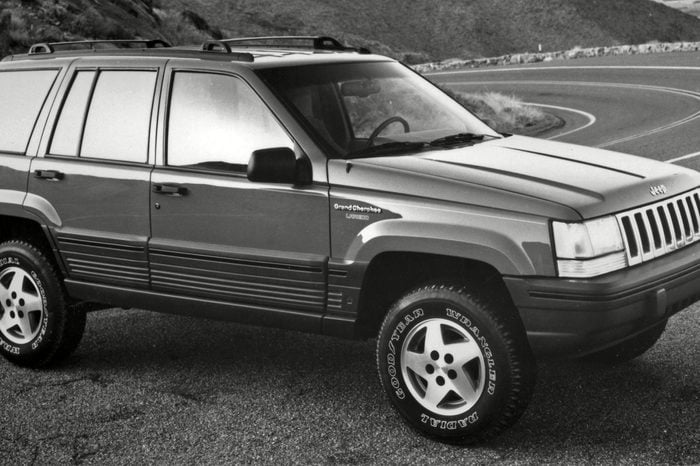
1993: Jeep Grand Cherokee
It would grow in popularity with suburban families making more trips to the YMCA than the to off-road tracks but we recognize the birth year of an iconic late 20th-century car, the Jeep Grand Cherokee. Plus, for SUV owners, it was most certainly more couth to be driving a Grand Cherokee than a white Ford Bronco into the mid-1990s.
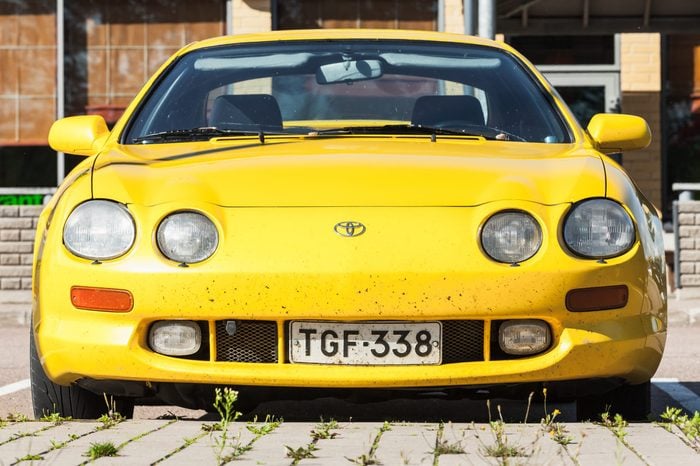
1994: Toyota Supra
A sports car for the everyman, the Supra was indeed popular in the mid-1990s but, thanks to a star turn in The Fast and the Furious movie franchise as well as being featured in countless video games, TV shows, and music videos, this small yet mighty ride had seen its fame grow exponentially in the years since production originally ceased in 2002. Thanks to the pop culture love, the Supra is back and better than ever.
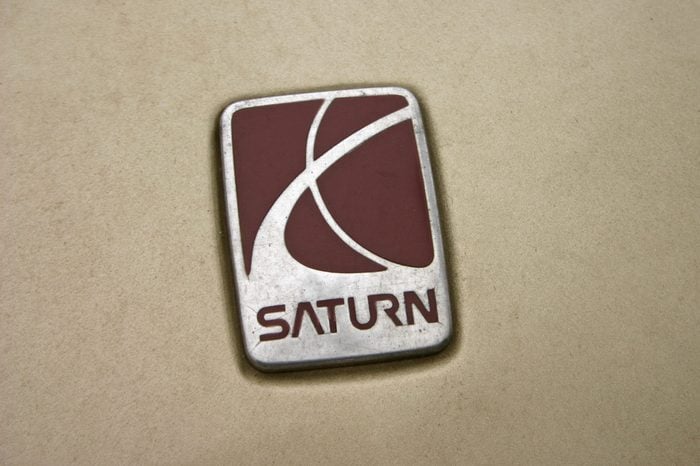
1995: Saturn S-Series
Thanks to famously no-haggle pricing and a refreshing low-key dealer experience, Saturn emerged onto the U.S. car scene in 1990 and made a lot of fans immediately. By 1995, Saturn had 1 million on the market in America, led by its first and flagship model, the S-Series.
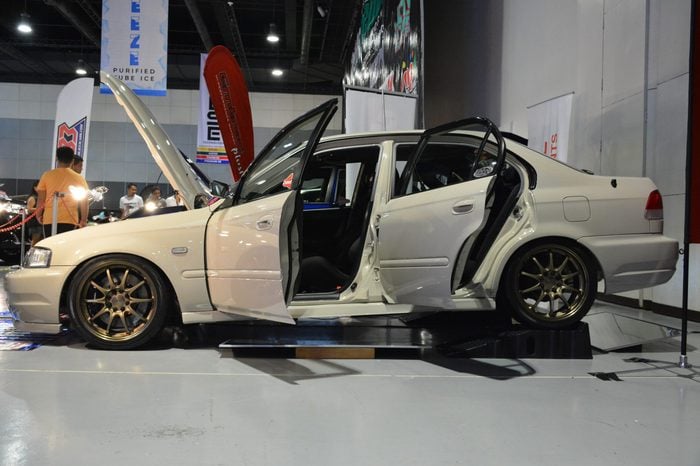
1996: Honda Civic
Redesigned in 1996, “the base engines were the first meet California’s LEV emissions standards,” according to Car and Driver. The magazine goes on to add, “Another innovation was the new continuously variable transmission that combines the convenience of an automatic with the performance and efficiency of a manual.” The Honda Civic began its life as a reliable, attractive car for everyone from a teen looking for an affordable first car to moms who demand a low maintenance ride, and the model had truly hit its stride in 1996.
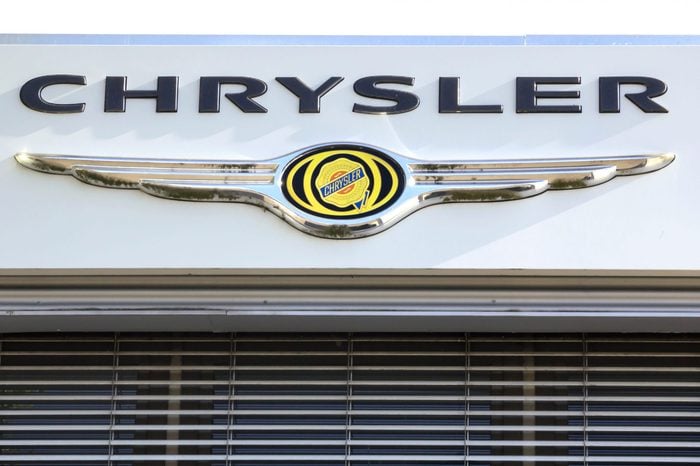
1997: Chrysler Town & Country
As Car and Driver said back then, “Chrysler designers have transformed the minivan from a steamer trunk into a piece of Vuitton luggage.” And thus was born a new generation of suburban family cars leading up to Toyota’s Swagger Wagon. Today it is almost hip to emerge from the sliding doors of a minivan with your kids but in the 1990s this was far from the case. Chrysler started to change the perception of minivans in 1997 with the Town & Country and parents everywhere are so very thankful. In the market for a new set of wheels? Start with our list of the best cars under $18,000.
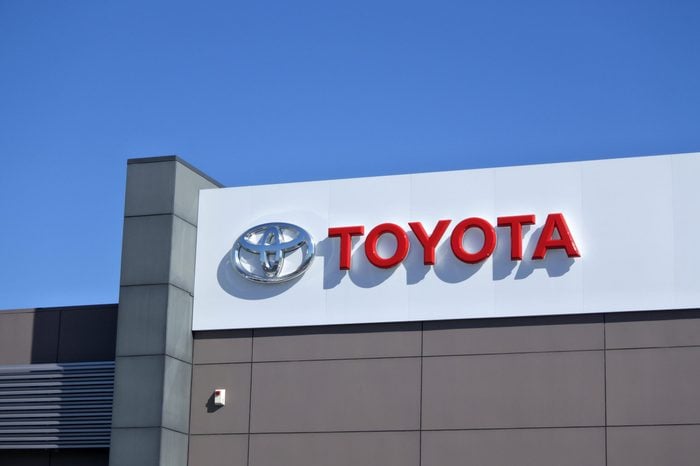
1998 to 2000: Toyota Camry
It arrived in the United States in 1983 but by the end of the last century, the age of the Camry was in full swing. This reliable Toyota still holds its value, still holds the top spot in American driveways, and back in the late 1990s/early aughts, it was holding Accord and Taurus at bay as the most popular car in the United States. Fun fact: with the exception of 1991 (Accord), Toyota’s flagship car has ranked first in sales every year since 1998—a two-decade run that shows little sign of stopping.
